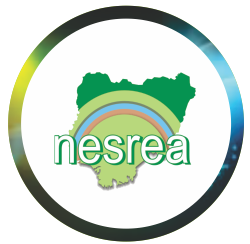NESREA’s CITES Enforcement
CITES
- It is the Convention on International Trade in Endangered Species of Wild Fauna and Flora.
- It also known as “Washington Convention “because it was signed in Washington.
- Nigeria joined other nations to ratify CITES in 1974 but it came into force in 1975.
PURPOSE OF CITES
- To ensure that international trade in wild specimens of animals and plants does not threaten their survival.
HOW CITES WORKS
- By subjecting international trade in specimen of selected species to a degree of protection.
- All imports, exports, re-exports and introduction from the sea of species covered by the Convention are authorized through permit and certification.
- Species covered by CITES are listed in three (3) different Appendices, according to the degree of their protection.
Appendix I
Include species threatened with extinction. Trade in specimens of these species is prohibited but permitted only in exceptional circumstances (such as for research purposes and those bred under captivity).
Appendix II
Include species not necessarily threatened with extinction, but in which trade must be controlled in order to avoid exploitation unsuited with their survival.
Appendix III
- Include species that are protected in at least one country, thus requiring
assistance from other Country of Parties in controlling their trade.
- Listing of species under this appendix is therefore country- specific.
CITES OPERATION PRINCIPLE
- CITES under its operating principle/techniques recognizes the role of the following authorities for its effective implementation by party member.
- Scientific Authority
- Management Authority and
- Enforcement Authority
CITES IMPLEMENTATION IN NIGERIA
CITES is being implemented in Nigeria through the three (3) Designated Authorities
- Scientific Authority includes the National Parks Service (NPS), Forestry Research Institute of Nigeria (FRIN) etc which conducts non-detrimental findings on the status of wildlife species and advises the Management Authority accordingly.
- Management Authority is the Federal Ministry of Environment through the Federal Department of Forestry (FDF) which issues permits and certificates on trade or possession of any specie covered under the appendices/ schedules in the case of local laws.
- Enforcement Authority is NESREA which enforces the provisions of the Convention, Act and the National Environmental Regulations on wildlife protection.
NESREA’S CITES ENFORCEMENT ACTIVITIES
- NESREA works through inter-agency collaboration especially with the lead Agency present at the ports and border posts such as Nigeria Customs Service (NCS) due to Single Window System upon which Government operates
- NCS alerts NESREA on any seizures and arrest at the International ports and border posts.
- NESREA takes over consignments seized by NCS, items are kept in the Agency’s custody.
- Where suspect is arrested with the specimen, such suspect is prosecuted and where found guilty, faces the penalty as prescribed by the judge using the laws and regulations in force.
- Some suspects have so far been arrested and many confiscated CITES specimen (items) are safely kept in the Agency’s Temporary Holding Facility (THF).
- NESREA reports every seizure to the CITES Secretariat through Elephant Trade Information System (ETIS) and transmit same to the INTERPOL headquarter Lyon through Ecomessage.
- About 1746.51kg of ivory and non-ivory CITES specimen are at the Agency’s custody,
LEGAL INSTRUMEMNTS FOR CITES ENFORCEMENT
- Endangered Species (Control of International Trade and Traffic) (Amendment), Act, 2016.
- The National Environmental (Protection of Endangered Species in International Trade) Regulations, 2011 S.I No: 16.
- Convention
NOTE:
Trade in any species of listed wildlife or possession of such requires valid permit. List of these species can be found through the following link/contacts: https://www.cites.org
